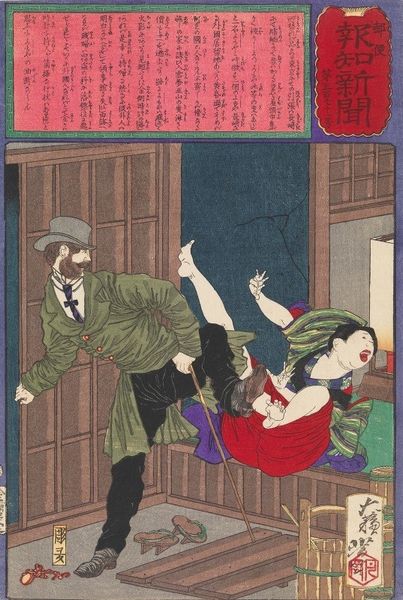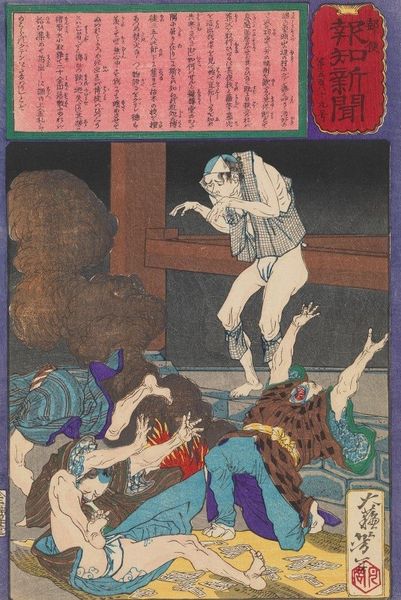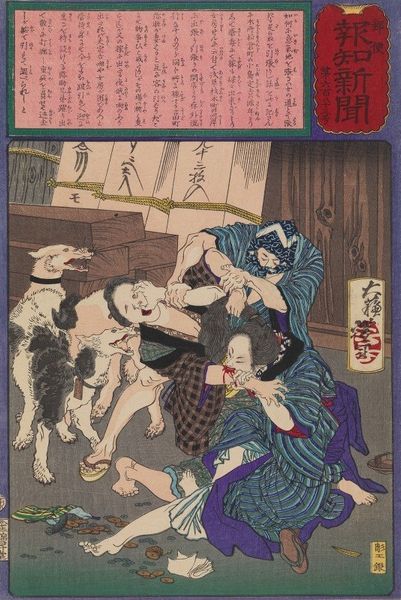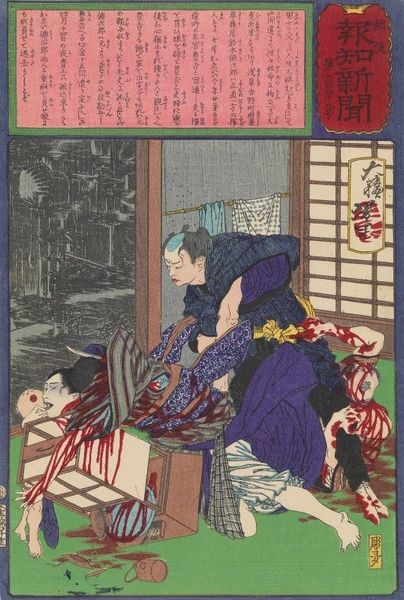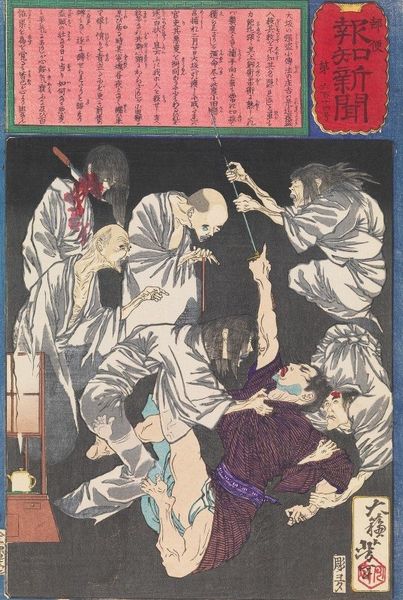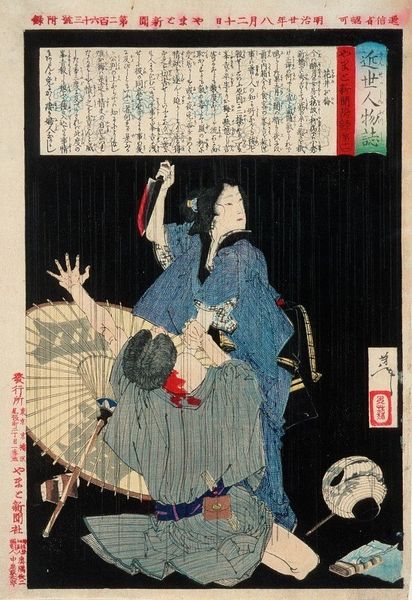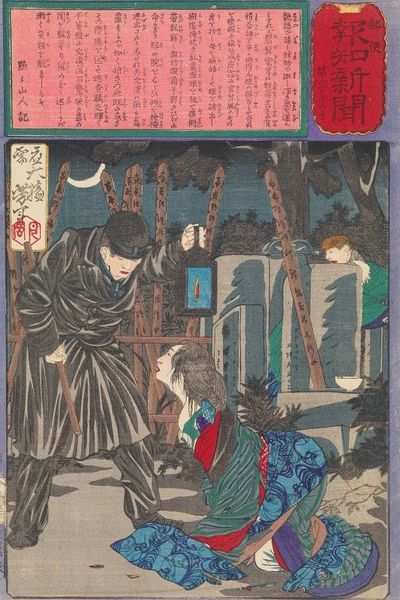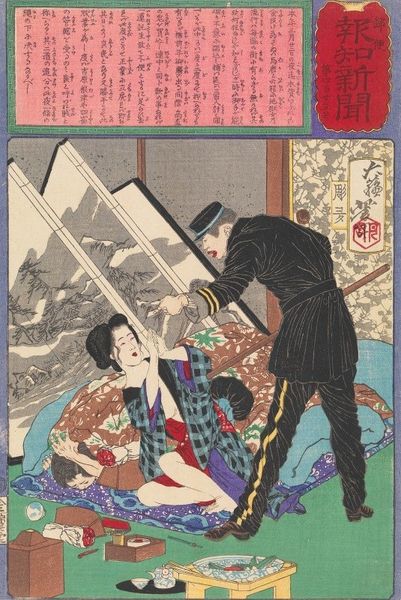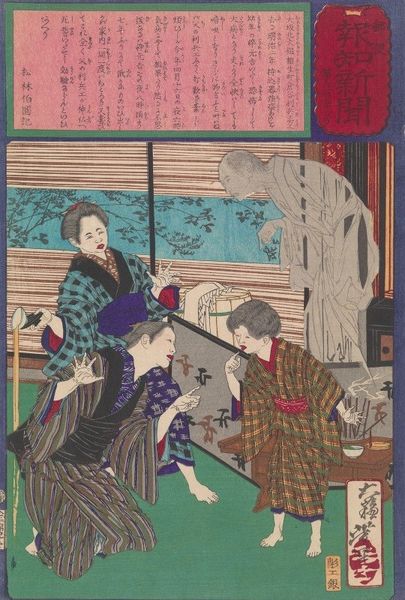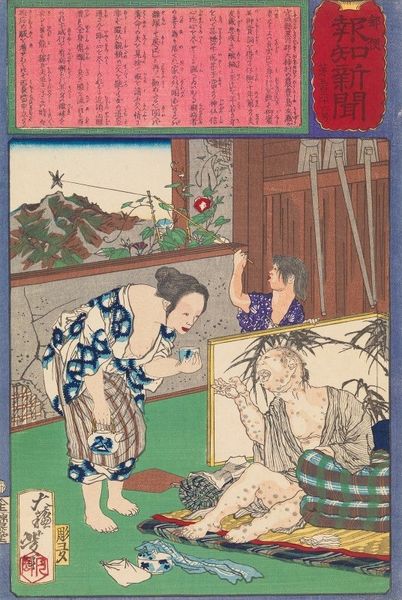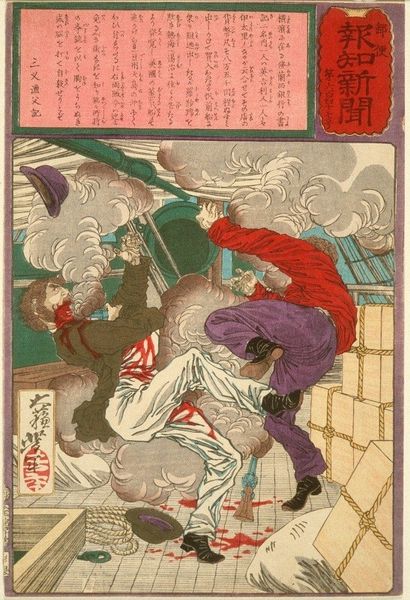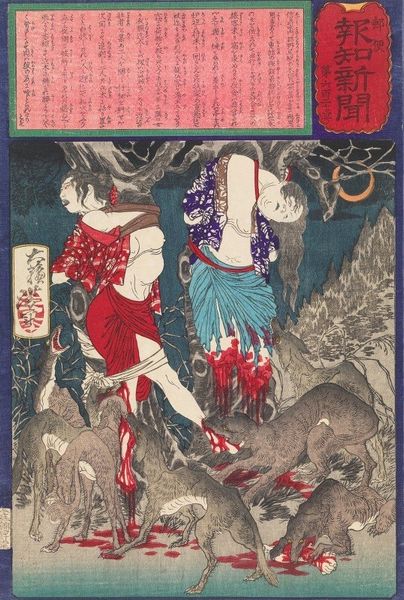
Copyright: Public Domain: Artvee
Curator: Well, this is intense. The first impression is startling—almost violent with that bold use of red. Editor: Indeed. What we're looking at is a woodblock print titled "Tajima Seitarō Murders His Wife When She Refuses to Return to Him" by Tsukioka Yoshitoshi, created around 1875. It exemplifies Yoshitoshi’s unsettling yet compelling narratives from the late Edo and early Meiji periods. Curator: Unsettling is right. The gush of blood, almost star-shaped, against the stark white background creates a visceral, almost theatrical drama. The symbol of violence looms over everything. I'm struck by how immediate and sensational it is. Editor: It speaks to a broader context of social change and the evolving role of the media at the time. These kinds of prints weren’t simply artistic expressions; they were part of a news culture, feeding into public interest in sensational stories and true crime. They offered a commentary, albeit a visually dramatic one, on issues of gender, domestic violence, and social order. The print served as visual reporting for those who likely were illiterate. Curator: You know, seeing the red splayed out like that, against the stark colors it's hard not to think about ritual sacrifice. The knife in his hand, the stark wall, this must have provoked strong feelings. Editor: Yes, consider also the red fabric in the lower-right corner. Blood red and full of depth and shadows. I read the deep blacks and purples to evoke feelings of anguish. While it graphically depicts violence, the ukiyo-e aesthetic brings its own cultural baggage. It romanticizes it at the same time. It uses tropes of the Kabuki theatre. Curator: That blend of genres seems typical of Yoshitoshi; the melding of stark horror with a detached formality underscores a certain complexity to the narrative. The way the figures are composed adds to that sense. We see a struggle depicted, a tragic turn, but from a distance. Editor: Right, it's fascinating to think how such prints contributed to the collective imagination. Curator: A disturbing artwork indeed, but illuminating how crime, gender, and news have become the cultural norms they are today. Editor: Indeed. The image may repel us, but the symbols force us to consider how humans remember crime.
Comments
No comments
Be the first to comment and join the conversation on the ultimate creative platform.
